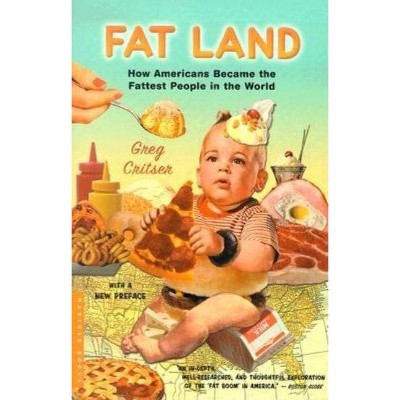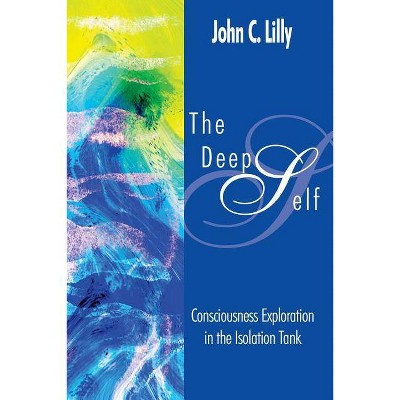Joe Kamiya - by Cynthia Kerson & Tom Collura & Joanne Kamiya (Paperback)

Similar Products
Products of same category from the store
AllProduct info
<p/><br></br><p><b> About the Book </b></p></br></br>Joe Kamiya is a forefather of EEG biofeedback (also known as neurofeedback). He led the way for us to apply this intervention not only from a clinical view, but also from a personal and self-realizational perspective. This interview-style book with Joe, his wife, and fellow researcher will fill your heart with promise, optimism, and cheer.<p/><br></br><p><b> Book Synopsis </b></p></br></br><p>Joe Kamiya is a philosopher and scientist. He thinks both outside and inside the box and is a genuine, empathic, and kind soul. Those of us who are amongst his colleagues share an appreciation for his contributions to the field of EEG discovery, operant conditioning, and neuromodulation. As one of the forefathers of EEG biofeedback, he led the way for us to apply this intervention not only from a clinical view, but also from a personal and self-realizational perspective. This is both for us personally, and for helping our clients and patients. Joe is honored in many ways, one in particular is with the First-Person Science award presented by the Foundation for Neurofeedback and Neuromodulation Research (FNNR). This annual award is given to one who had applied first-person science in research, educational or clinical settings in the spirit of Joe.</p><p>This book, <em>Joe Kamiya: Thinking Inside the Box</em>, will fill your heart with promise, optimism, and cheer. Joe is an endearing and charming man. Cynthia and Tom feel greatly enriched by this undertaking. They're sure you'll feel the same.</p><p>The book is divided into 12 chapters, which present Joe's chronological tale, from his original discoveries in Chicago to his work at UCSF in San Francisco. It also has many interesting and engaging talks between Tom, Cynthia, Joe and Joanne that will show what a scholar and compassionate person Joe is. The book has 2 forewords. One from his long-time colleague and friend, Jim Johnston, who helped him develop the first EEG recording devices and remains close to him and Joanne, even to this day. The other is Gary Kamiya, his son and Joanne's stepson. Gary is an acclaimed writer and editor, and he shares a side of Joe that proves the man walks his talk and was a wonderful father and family man.</p><p>Joe first found that one can discern EEG states and then found that one could actually regulate them. This was ground-breaking in the late 60s and the 70s. Without this contribution we would not have the foundational understanding of EEG operant conditioning from a first-person perspective.</p><p>Cynthia Kerson and Tom Collura enjoyed many weekly phone meetings, talking with Joe and his wife, and partner in research, Joanne. they talked about their past, their discoveries, the present (at this writing, he is 94 years young), and their future hopes for our field, which is to consider teaching self-actualizing skills to children, possibly in the school setting, and to use neuromodulation as a tool for self-regulation for human improvement, in addition to for clinical uses.</p><p/><br></br><p><b> Review Quotes </b></p></br></br><br><p>Thinking Inside the Box is an exquisite living interview of Joe Kamiya's life as a humanitarian, scientist and visionary. The authors brilliantly capture Joe's heart, mind and soul as they weave introspective discussion, historical and cultural content, imagination, and compassionate inquiry to remind us of the importance of honoring a personal science linked with objective exploration. This will be a classic in the archives of understanding the evolution of biofeedback and neurofeedback.</p><p>Sal Barba, PhD, BCN<br /> Co-founder of Island Center for Complementary Medicine<br /> Seattle, Washington</p><p>I met Joe in 1972 at the Biofeedback Research Society meeting in Monterey... and have gotten to know him slowly through the years. I have always known Joe to be a gentle thoughtful scientist, providing deep thoughtful replies to inquiries, giving time to everyone openly. Joe was so busy giving that it was only rarely and with the briefest of glimpses that I learned of his earlier days which led him to EEG and discrimination of the alpha state. He only rarely hinted at his time in internment, which may have helped lead to his deep introspection and interest in internal states. It was never about Joe... he thought deeply and not about personal fame/fortune. He asked the best questions. I recommend that all involved in biofeedback get this book and enjoy delving into the one of the true foundations of the field... the depth and passion of a pioneer... my dear friend, Joe Kamiya... as gently guided by the authors to share these riches with us all. You will be a better person for reading it.</p><p>Jay Gunkelman, QEEGD Emeritus<br /> Suisun City, CA</p><br>
Price History
Price Archive shows prices from various stores, lets you see history and find the cheapest. There is no actual sale on the website. For all support, inquiry and suggestion messagescommunication@pricearchive.us




















